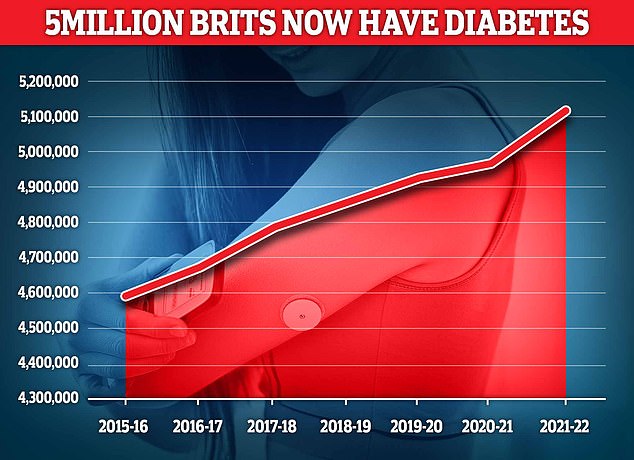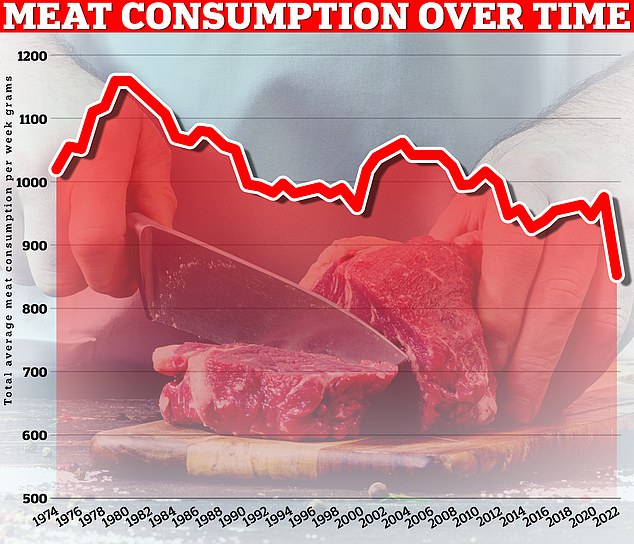Eating red and processed meat could lead to a higher risk of developing type 2 diabetes, an analysis of two million people suggests.
Researchers analysed data from 31 studies in 20 countries to find out if there was a link between eating different types of meat and the disease, which affects millions of people in the UK.
One analysis found that regularly eating 50 grams of processed meat a day (the equivalent of two slices of ham) was linked to a 15 percent higher risk of developing type 2 diabetes over the next 10 years.
Meanwhile, eating 100 grams of unprocessed red meat a day (the equivalent of a small steak) was associated with a 10 percent higher risk of type 2 diabetes.
Eating 100 grams of poultry meat a day (such as a small chicken breast) was also associated with an 8 percent higher risk of developing the disease.
One analysis found that regularly eating 50 grams of processed meat a day (the equivalent of two slices of ham) was linked to a 15 percent higher risk of developing type 2 diabetes over the next 10 years.

Diabetes is now a “rapidly escalating crisis” in the UK as the number of people suffering from the disease is believed to have surpassed five million for the first time.
However, when further research was done to test the findings in different settings, the link to poultry weakened.
Professor Nita Forouhi, lead author of the paper from the University of Cambridge, said: ‘Our research provides the most comprehensive evidence to date of an association between eating processed meat and unprocessed red meat and an increased future risk of type 2 diabetes.
‘Supports recommendations to limit consumption of processed meat and unprocessed red meat to reduce cases of type 2 diabetes in the population.
‘While our findings provide more comprehensive evidence on the association between poultry consumption and type 2 diabetes than was previously available, the link remains uncertain and needs to be further investigated.’

This chart shows how much meat Britons have bought on average each week – 2022 data shows a massive drop compared to historical levels (data does not include fish)
In a paper published in The Lancet Diabetes and Endocrinology journal, the team said it is unclear exactly how meat consumption might affect the risk of type 2 diabetes.
They suggest several possible mechanisms, including that cooking meat at high temperatures could trigger an inflammatory response in the body and lead to insulin resistance.
Commenting on the findings, Dr Duane Mellor, a dietitian and spokesperson for the British Dietetic Association, said: ‘The overall message of moderating meat consumption is in line with national healthy eating guidelines and advice to reduce the risk of developing type 2 diabetes.
‘This includes eating a diet based on vegetables, fruits, nuts, seeds, beans, peas and lentils along with some whole grains and moderate amounts of meat and dairy products with limited amounts of added fat, salt and sugar.
‘This should be accompanied by regular physical activity to minimise the risk of developing type 2 diabetes.
‘If people are considering reducing their meat consumption, it is important that the nutrients found in meat are obtained from other foods, these include iron, vitamin B12 and protein.
‘When considering reducing or eliminating a type of food from the diet, it is important that any substitute food provides the same nutrients to maintain an overall healthy diet.’

